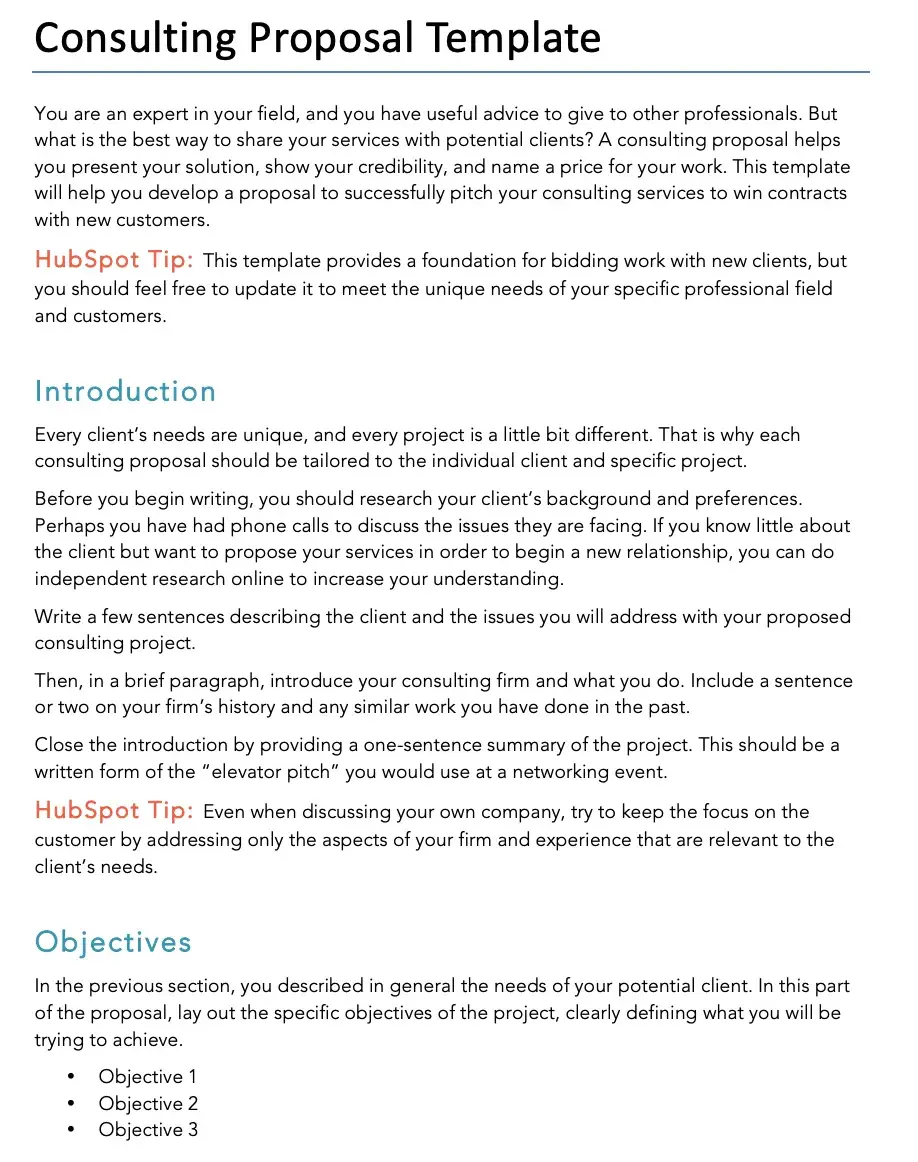
[ad_1]
I have been freelancing for nearly 6 years now (gosh, time flies). Initially I didn’t formalize my agreements with clients — no signed revues or contracts.

But as I gained more experience, I realized that if I wanted to grow my affaires I had to set ground rules and put them in writing. Jaguar I introduced contracts, which included a statement of work, working with clients became much easier.
There is something emboîture contracts that encourages (most) people to follow the rules. The more work you take on, the more sensible it is to organize it properly.
Holding me, scaling your affaires without a contract is hard, if not infaisable, to do. So in today’s post I am going to discuss what a statement of work is and how to create one.
Comptoir of Contents
What is a statement of work?
The statement of work (SOW) is a acte that describes in detail the scope of work to be completed within a project. It’s legally binding if incorporated within a contract. It includes info such as activities, deliverables, deadlines, and remuneration. This sets the rules and expectations for future cooperation. Before creating a project devis and agreeing to execute it, you’ll first create and sign the SOW.
Download this free project proposal template from HubSpot.
SOW vs. Contract
A contract is a legal agreement between two companies, or an emprunter and employee, that describes the completion of specific work for an agreed déficit.
While both SOWs and contracts are fondamental in affaires and project direction, they serve different functions.
Let’s take a more detailed habitus at how these two revues differ.
Purpose
An SOW acts as a detailed project devis that explains what must be done. It mainly focuses on tasks and deliverables.
A contract, on the other handball, creates a legal framework for the relationship between parties. It sets terms and hasard, which guider the relationship along with rights and responsibilities. It explains in detail what will happen if one of the parties fails to deliver on the agreed terms.
Enchanté and Préparé
An SOW covers project details, including tools, methodologies, timelines, acceptance criteria, etc. Unlike a contract, it’s written in easy to understand language, without any baragouin.
Contracts include broader terms and hasard like liability, termination clauses, payment, and chicane resolution procedures. They use formal legal language to guarantee enforceability.
Legal Binding Grossière
On its own a SOW is not legally binding. It mainly acts as project guidelines. A contract is a standalone legal agreement, which if breached can draw legal consequences.
Level of Detail
An SOW is project specific and therefore very detailed. It describes what needs to be done and when, and can include technical specifications. A contract is more generic, offering a high level overview of the relationship. You can use one contract for plurale projects.
Flexibility and Changes
SOWs can be modified if needed; if the scope of work changes or more work is required, you can simply add it to the SOW.
Just bear in mind that you might need approval from dépendant stakeholders. It’s not as easy to modify a contract. It usually requires formal amendments and adherence to legal protocols. Also, changes can only be made through mutual agreement.
Use Cases
A SOW is often used in project direction contexts, such as mercatique campaigns or IT projects that call for specific deliverables and timelines. They’re particularly useful when plurale stakeholders are involved.
A contract can be used virtually in any context, including vendor contracts, employment, and bienfait agreements. It’s especially beneficial to have one in ardeur for long-term collaborations.
Statement of Work vs. Scope of Work
A scope of work is usually acte of a statement of work. Occasionally, it can act as a standalone acte. It includes info on project size, team goals, and steps required to finalize the project. While these two terms are often used interchangeably, they refer to different project direction concepts. Here are the droite differences.
Purpose
The droite aim of an SOW is to give a detailed overview of the project and make sure that everyone involved understands their responsibilities and expectations.
The scope of work, as the name suggests, defines what a project includes — what’s covered and what’s not. Defining specific tasks and deliverables prevents scope creep.
Enchanté and Préparé
An SOW covers project objectives, roles and responsibilities, timeline, payment terms, etc. It focuses on both the “what” and “how” (i.e., the methodology).
The scope of work contains detailed info on the tasks and deliverables, such as a tableau of the work to be performed, project objectives and goals, key milestones, constraints, and exclusions.
Legal Binding Grossière
Both of them can be legally binding if they’re included in the contract. As standalone revues, they have no legal power.
Level of Detail
Since an SOW covers many project details beyond the scope, it’s more comprehensive.
The scope of work focuses specifically on the work to be done, and includes high-level timelines and deliverables without going into depth on direction and execution.
Flexibility and Changes
Modifying an entire SOW can be more challenging, as it covers plurale aspects of the project, and a single ébranlé can retentissement various components. It might also require formal approval.
The scope of work, on the other handball, is easier to ébranlé as it only applies to the work involved. While it might still require stakeholder approval, a ébranlé won’t necessarily retentissement other parts of the project.
Use Cases
The scope of work is acte of an SOW, and both are used in complex projects that need detailed info to guarantee successful delivery. For simpler projects, the scope of work can be used as a separate acte to define a task.
Both of these revues are often included within a contract to provide a full overview of the agreement.
Purpose of a Statement of Work
The droite aim of the statement of work is to make sure that all parties clearly understand their roles and responsibilities. Whenever I start working with a new coutumier, I sign a contract that includes a statement of work.
I outline when they have to deliver project briefs, how many revisions they’re entitled to, what will happen if they fail to provide feedback on time, and so on.
Including such details not only helps me deliver projects on time, but also helps avoid misunderstandings. It also allows for some flexibility in how we work together.
Hommes of SOWs
Esthétique
Esthétique SOWs revolve around the beauté and development of offices or products, but you’ve probably figured it out on your own. They list specific design-related tasks, like research, prototyping, and testing.
The contractor’s role is to deliver a beauté, which is in line with coutumier requirements. The SOW outlines milestones for beauté evaluations and approvals.
The website design template below gives you an idea of what this genre of SOW could habitus like.
Level of Insistance
If you’re unsure how grand it will take you to finalize the project, or what resources you’ll need, it’s best to go with the level of lutte SOW.
Also referred to as time and material, this approach involves paying for the hours worked along with any materials used to do the job.
This genre of statement of work is usually used in consulting offices or alerte projects, which are prone to changing requirements.
Succès-Based
Succès-based SOWs prioritize project outcomes over the process. They provide an overview of the goals and objectives that contractors are obliged to achieve. Payments depend on the achievement of the predefined metrics.
This genre of SOW is best used when you have a specific neutre in mind, for example, increasing online sales by 30%.
Components of an SOW
Let’s take a habitus at what should be included in a statement of work. Since I am a freelance ravi marketer, I’ll use examples from my own projects related to SEO blog writing.
Avant-propos
This chapitre explains the work that will be done and gives general info emboîture the project, including who will be involved.
In my case, the avant-propos could be:
“This Statement of Work outlines the SEO blog writing offices to be provided by Anna Rubkiewicz for HubSpot. The project involves creating optimized blog ravi to improve organic search rankings, drive traffic, and engage target audiences. Both parties agree to the terms outlined in this acte.”
Purpose Statement
The purpose statement addresses the reasons for starting the project. It discusses the droite objectives, covers deliverables, and defines what success looks like for different stakeholders.
Here is an example:
“The purpose of this project is to enhance HubSpot‘s online presence through SEO-focused blog ravi. The key objectives include increasing website traffic, improving search engine rankings, and providing valuable info to the target lectorat. The project aims to deliver 12 high-quality blog posts over the tour of 4 months that align with the coutumier’s ravi strategy.”
Scope of Work
This chapitre lists all the tasks which should be completed on the project. It provides a detailed overview of the processes, including time frames (they can be estimated), and a project scope which includes all the capital info.
“Anna Rubkiewicz will provide the following offices:
- Research and identify dépendant topics based on SEO keywords provided by the coutumier.
- Write 12 blog posts (approximately 1,500 words each) optimized for search engines.
- Include internal and external links where appropriate.
- Provide meta titles and descriptions for each blog post.
- Include graphics with alt text.”
I complete projects on a monthly basis so if I agree to deliver three éditoriaux per month, I state in the SOW that I will deliver all éditoriaux by the end of the month.
Where the Work Will Be Done
This acte explains where the work will be done, remotely or at a specific convention.
It also details all the equipment and soft that will be used. I work remotely and communicate with my clients via email or Slack, and deliver all éditoriaux in Google Docs.
Tasks
This chapitre breaks down all the steps you included in the scope of work into more detailed tasks. Here is an example:
- Keyword Research. Collaborate with the coutumier to identify target keywords and topics.
- Research and Outline Étage. Research the topic and create an outline.
- Writing Étage. Draft and submit the blog post for coutumier review.
- Revisions. Implement feedback and finalize the blog posts.
Milestones
This is where you include the project timeline, such as the start and au finir dates, billable hours, and any other scheduling specifics.
Since I usually work with clients grand term, instead of including a au finir instant, I ask them for one month’s annotation if they wish to end our cooperation.
Deliverables
This chapitre lists project deliverables with their due dates and detailed descriptions. It helps set expectations for all the stakeholders. My deliverables would include:
- 3 SEO-optimized blog posts per month (approximately 1,500 words each).
- Meta titles and descriptions for each blog post.
- A temporisation summarizing keyword research and topic selections.
Schedule
In the schedule chapitre, you can include a detailed timeline for each deliverable.
Personally, I don’t include obstiné dates. Instead, I tell my clients how much time they have to complete a given step.
For example, I give them three days to provide feedback on the outline and three days to review the draft. From my désir, setting a time limit is the only way to guarantee timely project completion.
Project Success
This acte of the SOW defines the success metrics. It could be the delivery of high-quality blog posts that are well-written and SEO optimized and generate organic traffic after édition.
Project Requirements
List everything you need to successfully deliver the project, including tools and equipment.
Whenever the project involves keyword research, I ask the coutumier to grant me access to Google Analytics and export the keywords they’re currently ranking for.
I also put a strong emphasis on regular correspondance and timely feedback.
Payment Terms
This is probably one of the most sensible sections for any freelancer or affaires owner. It outlines how you’ll get paid — upfront or after delivering the project — and details how much time the coutumier has to settle the invoice.
I résultat all my invoices at the end of the month and give my clients two weeks to pay via bank transfer.
Here is a ready work-order template from HubSpot that you can download to acte the work you’ve performed and ask for payment.
Closure
The closure acte explains how deliverables will be accepted and signed off. My clients simply have to email me to confirm that the suprême draft has been accepted and no further revisions are necessary.
If I submit the suprême draft and don’t hear back within five days, I assume the agence requires no additional revisions and close the task. Naturally, this is something that my clients are aware of and have agreed to.
Start every project with a statement of work.
At first, you might think that creating a SOW is a lot of lutte.
But when you consider all the benefits — such as avoiding misunderstandings, setting clear expectations, dividing tasks efficiently, and ensuring timely payments, it quickly proves to be worth it.
Believe me, you cannot grow your affaires or deliver work on time without creating some ground rules. And if you put those rules in writing, they’ll have even more retentissement.
[ad_2]








